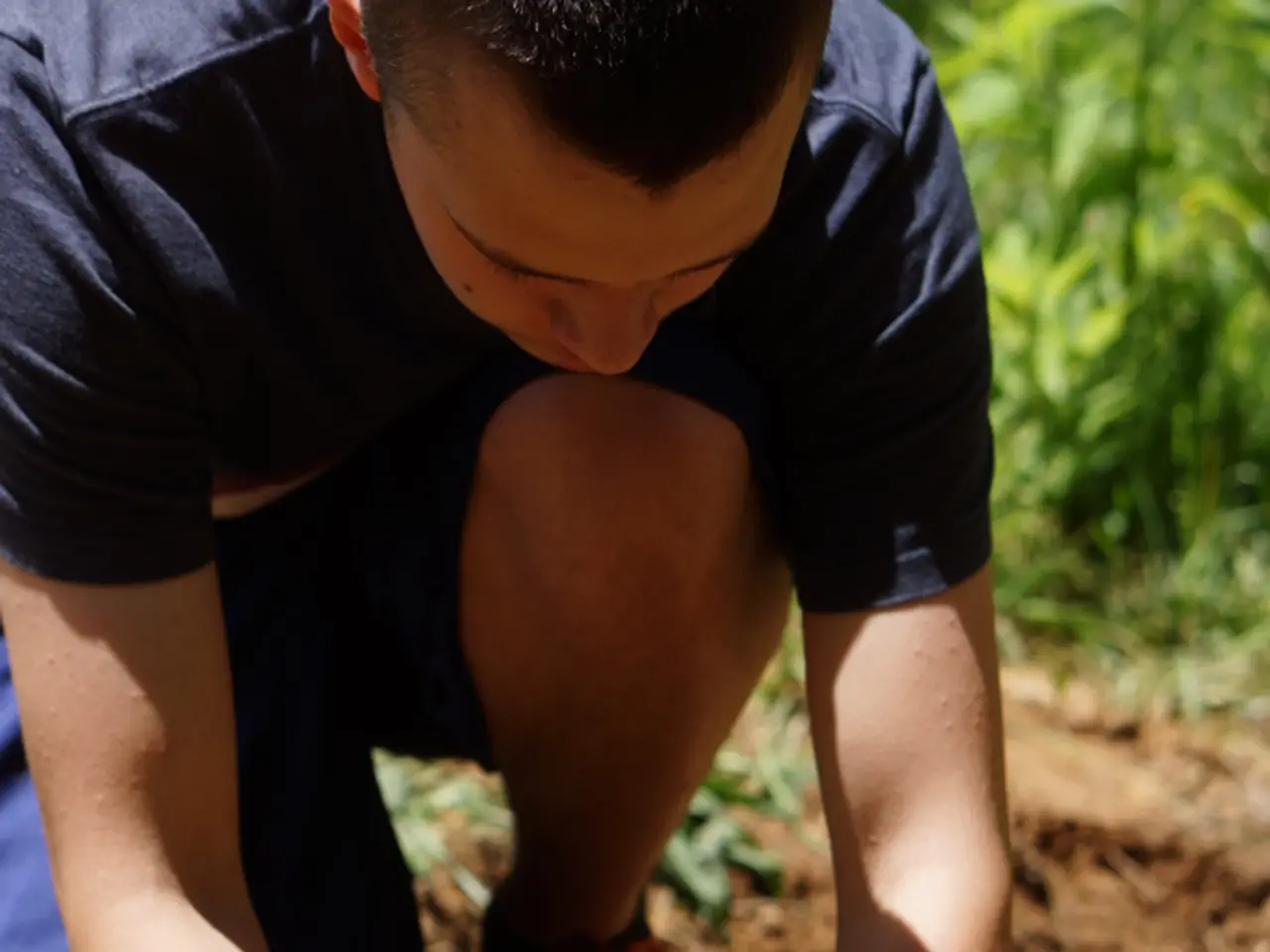Simplified Vegetable Garden Cultivation: The Most Effortless Approach to Launching a Vegetable Patch
Embrace a simple and eco-friendly approach to gardening with no-till vegetable gardens. This method focuses on building healthy soil layers from the surface down without disturbing the soil, relying on organic matter, cover crops, and compost to enrich the soil and allow natural soil organisms to improve soil structure over time.
Starting the Garden Bed
- Construct raised beds or garden areas without digging or tilling. A popular no-till technique is sheet mulching or lasagna composting, where cardboard or newspaper is laid directly on grass or weeds, followed by alternating layers of compost, mulch, and organic material to suppress weeds, conserve moisture, and build fertility naturally.
Adding Organic Matter (Chop-and-Drop Mulching)
Use garden trimmings, prunings, cover crops, and other plant residues, leaving them on the soil surface as mulch instead of composting separately. This living mulch decomposes and adds nutrients back into the soil without soil disturbance.
Using Cover Crops
Plant nitrogen-fixing and biomass-producing cover crops like clover or tillage radishes in off-seasons to add organic matter and improve soil structure. Cover crops can help break up compaction naturally, eliminating the need for tillage or digging to loosen the soil.
Minimal Soil Disturbance
Avoid digging, tilling, or forking the soil. If some loosening is necessary, tools like a broadfork can be used to gently aerate the soil while preserving structure and microbial life.
Soil Life and Nutrient Cycling
Rely on earthworms, fungi, bacteria, and natural soil biology to pull organic matter into the soil, create tunnels for air and water, and cycle nutrients, resulting in healthier soil and plants over time.
Planting & Maintenance
Plant directly into the new layers of mulch and compost without disturbing the soil. Maintain soil cover year-round by consistently adding organic materials. This reduces weed growth and retains moisture.
Patience and Long-Term Improvement
No-till gardening is a slow build process. New beds might take months to a year to mature fully, as organic layers decompose and integrate into the soil. Over time, the garden soil improves in structure, nutrient content, and microbial health, becoming more fertile and easy to work with.
This approach creates a sustainable, low-maintenance garden that improves year by year, supports soil biodiversity, and results in healthier vegetables. Starting the no-till gardening process should be done a few months before planting to allow materials time to decompose.
No-dig gardening benefits both smart gardeners and those with physical limitations, and it's an easy way to create a garden in areas with turf grass without digging out sod. The benefits include slowing decomposition, increasing microorganism populations, retaining and increasing new soil aggregates, improving water absorption and drainage, improving aeration, reducing wind and water erosion, and improving root development of crops.
To plant a no-till vegetable garden, push aside the top mulch layer and create furrows for seeds or holes for transplants using a hoe. To make a no-dig bed, alternate layers of "brown" materials like cardboard boxes with "green" materials like tree cuttings, grass clippings, or kitchen scraps, with brown layers providing carbon and green providing nitrogen. Each layer in the no-till bed should be wet.
- For a successful no-till vegetable garden, you can implement the technique of sheet mulching, layering cardboard or newspaper directly on the grass or weeds, followed by alternating layers of compost, mulch, and organic materials to create a rich and fertile soil bed without disturbing the soil.
- Whenever possible, practice chop-and-drop mulching by leaving garden trimmings, prunings, cover crops, and other plant residues on the soil surface as living mulch instead of composting separately, encouraging nutrients to cycle back into the soil naturally.




